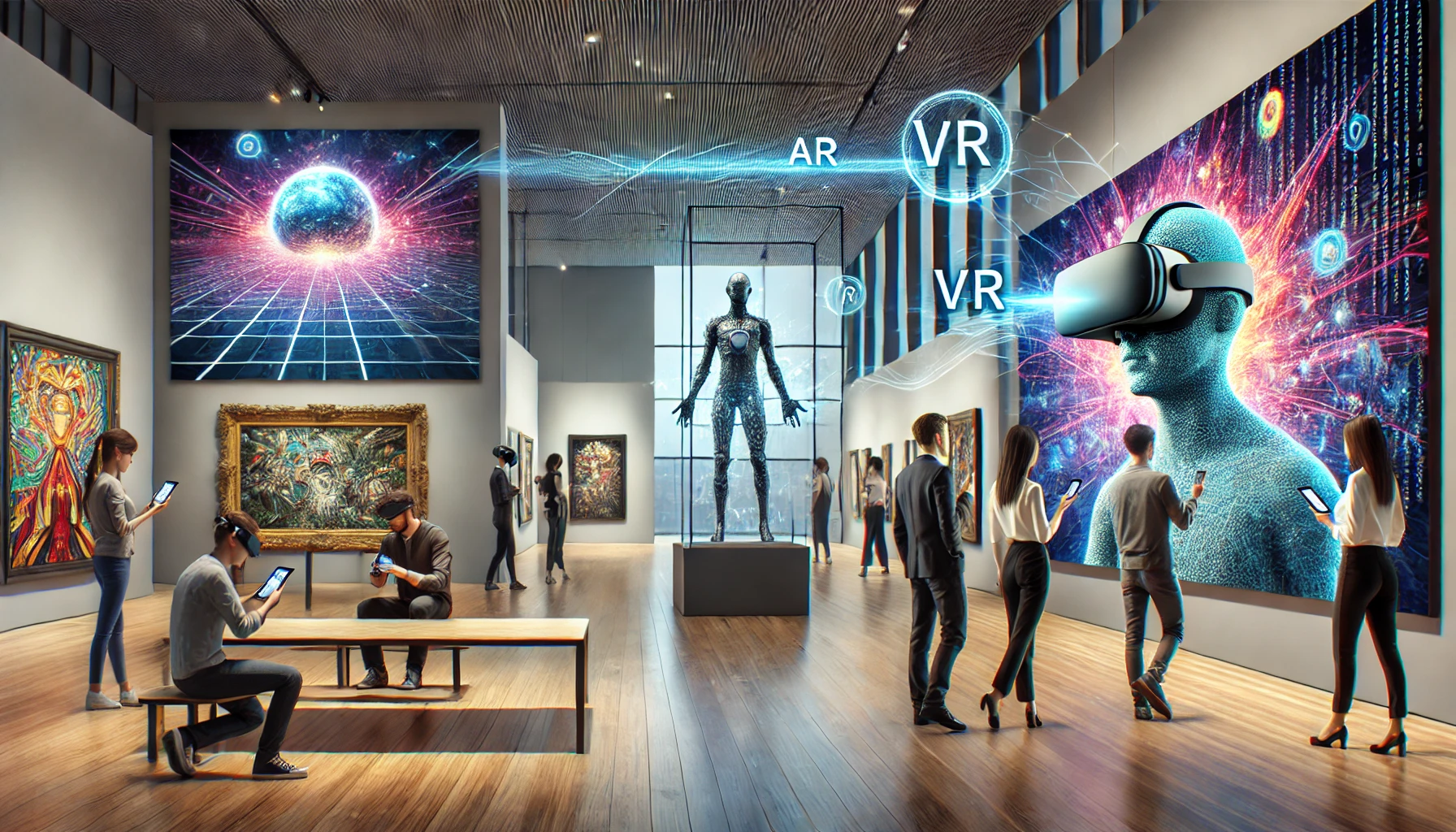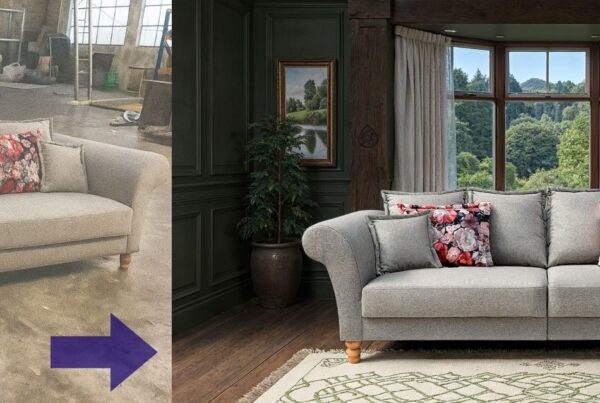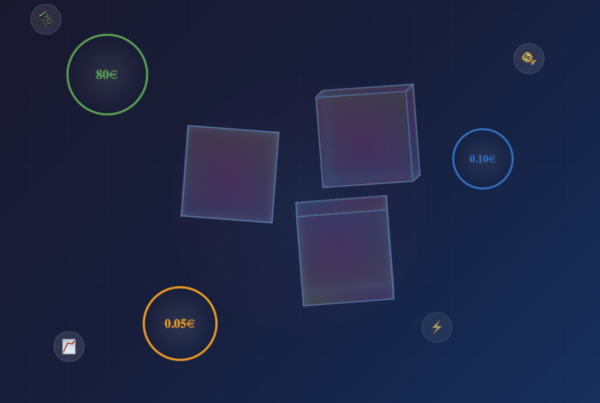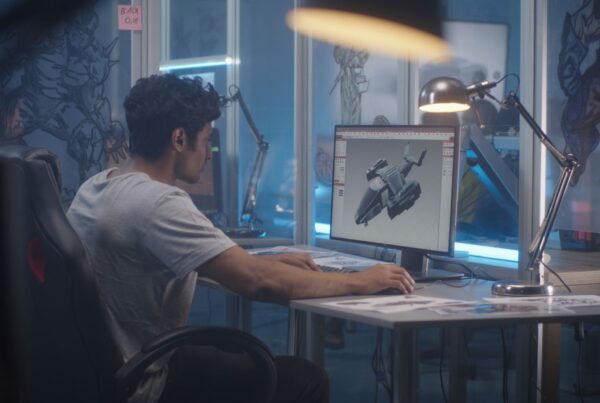The Transformative Power of Visual Commerce for Art
Visual commerce for art is revolutionizing how we experience and interact with art. Leveraging augmented reality (AR), virtual reality (VR), and 3D renderings, companies like Mazing are at the forefront of this transformation. In this article, we explore the impact of visual commerce on the art world, its benefits, real-world applications, and future trends.
These advanced technologies provide artists and galleries with new tools to showcase their work, offering viewers an immersive and interactive experience. AR allows art enthusiasts to visualize how a piece might look in their own space, while VR can transport them to virtual galleries, offering a unique perspective on the artwork. 3D renderings add another layer of depth, enabling a detailed exploration of art pieces from every angle.
With visual commerce, the art-buying process becomes more intuitive and engaging. Potential buyers can make more informed decisions by interacting with artworks in a virtual environment. This not only enhances the shopping experience but also increases buyer confidence and satisfaction. Moreover, visual commerce technologies can democratize access to art, making it easier for people from all walks of life to experience and appreciate diverse artistic expressions.
In this article, we will delve into the various aspects of visual commerce for art, highlighting its transformative power and potential to redefine the art world. We will discuss the numerous benefits these technologies bring, such as enhanced engagement, personalized experiences, and the ability to visualize complex concepts. Through real-world examples and case studies, we will illustrate how visual commerce is being successfully implemented across different segments of the art industry.
Understanding Visual Commerce for Art
What is Visual Commerce for Art?
Visual commerce for art integrates advanced digital technologies such as AR, VR, and 3D renderings to enhance the visualization and interaction of art pieces. This innovative approach allows artists, galleries, and buyers to engage with art in immersive and interactive ways, breaking the traditional barriers of physical art displays.
Furthermore, visual commerce enables a more dynamic and personalized art experience. Augmented reality (AR) overlays digital information onto the real world, allowing users to see how an artwork would look in their own space. Virtual reality (VR) creates entirely immersive environments where users can explore virtual galleries and exhibitions from the comfort of their homes. 3D renderings provide detailed, high-resolution views of artworks, allowing viewers to appreciate every nuance and texture as if they were examining the piece in person.
For artists, this means new ways to showcase their work and reach a wider audience. They can create interactive exhibits that tell a story or provide deeper insights into their creative process. Galleries can use these technologies to enhance their exhibitions, offering visitors an enriched experience that goes beyond traditional viewing. For buyers, visual commerce offers a more engaging and informed purchasing process, reducing the uncertainty often associated with buying art online.
How Visual Commerce for Art is Changing the Experience
Visual commerce transforms art experiences by making them more engaging and interactive. AR and VR enable users to view and interact with art in a virtual space, offering new perspectives and deeper insights. 3D renderings provide detailed visualizations, allowing potential buyers to see every nuance of a piece before making a purchase.
Benefits of Visual Commerce for Art
Enhanced Engagement and Interaction
Visual commerce tools significantly enhance user engagement. AR and VR technologies create immersive experiences, allowing users to explore art in a virtual environment. This level of interaction not only captivates the audience but also encourages a deeper connection with the artwork.
Visualizing Complex Concepts
Complex art pieces often require detailed explanations. Visual commerce makes it easier to understand these complexities by providing interactive and detailed visualizations. This is particularly useful for educational purposes, where understanding the intricacies of art is crucial.
Personalized Experiences
With visual commerce, art experiences can be tailored to individual preferences. Users can interact with artworks in ways that resonate with them personally, creating a unique and memorable experience. This personalization fosters a stronger emotional connection to the art.
Real-World Examples of Visual Commerce for Art
Case Study: Virtual Test Hanging of Pictures – Art-Mind Shop
Art-Mind Shop implemented AR to allow customers to virtually hang pictures in their homes before purchasing. This feature significantly increased customer satisfaction and reduced return rates, showcasing the practical benefits of visual commerce.
Augmented reality (AR) has the potential to revolutionize the way we experience art by offering a new level of interactivity and immersion. This case study about visual commerce for art explores how AR was used at Art-Mind Shop and examines the potential benefits and challenges of this technology.
For many shoppers, buying pictures online involves a long decision-making process. Customers look at hundreds of products, trying to estimate the actual size from photos and guess how the colors of the artwork will fit into their room.
AR provides a solution. Art pieces can be displayed in 360° on the website using a 3D viewer, making the purchase decision easier. Clicking on the “View in room” button starts the AR experience, allowing customers to visualize the artwork in their own space.
The big advantage of the Mazing platform is its scalability and cost-effectiveness. Thousands of artworks posed no problem for Art-Mind Shop, showcasing the practical benefits of visual commerce technology.
AR significantly enhanced customer engagement at Art-Mind Shop:
- 24% longer dwell time when AR is used.
- 67% higher completion rate when AR is used.
- 100% emotional shopping experience.
Another example of AR in the art world is the “Pocket Gallery” app developed by the National Gallery in London. This app allows users to view and interact with paintings from the National Gallery’s collection in a virtual gallery space. Using AR technology, users can see the paintings as if they were hanging in their own homes and can even take a virtual tour of the National Gallery in London.
Challenges and Considerations for Implementing Visual Commerce for Art
Technical Requirements and Costs
Implementing visual commerce technologies involves significant investment in hardware and software. Ensuring compatibility and seamless integration with existing systems is crucial. Mazing offers comprehensive support services to help clients navigate these challenges efficiently.
Accessibility and Equity
Making visual commerce accessible to all is a key consideration. This involves ensuring that the technologies are user-friendly and available to diverse audiences. Mazing is committed to developing inclusive solutions that cater to a wide range of users.
The Future of Visual Commerce for Art
Predicted Trends and Innovations
The future of visual commerce in art looks promising with continuous advancements in AR, VR, and 3D technologies. We can expect more sophisticated and immersive experiences, making art more accessible and engaging than ever before. Here are some of the exciting developments on the horizon:
Predicted Trends and Innovations
Enhanced Interactivity: As AR and VR technologies advance, users will be able to interact with art in more complex and engaging ways. This could include multi-sensory experiences, where users can not only see but also hear and even feel elements of the artwork through haptic feedback.
Remote Art Exhibitions: Virtual reality can bring art exhibitions to people’s homes, breaking geographical barriers. Artists and galleries can reach a global audience, offering virtual tours and interactive exhibits that are as close to the real experience as possible.
AI Integration: Artificial Intelligence (AI) will play a significant role in personalizing art experiences. AI algorithms can recommend artworks based on user preferences and past interactions, creating a customized viewing experience that enhances user engagement.
Collaborative Art Creation: Visual commerce technologies will enable collaborative art creation across the globe. Artists can work together in virtual spaces, blending traditional and digital techniques to create unique pieces of art.
Educational Tools: AR and VR will become powerful tools in art education, providing immersive learning experiences. Students can explore historical art pieces, understand artistic techniques in a hands-on way, and even create their own art in a virtual environment.
The Role of Visual Commerce for Art in Lifelong Learning
Visual commerce will play a significant role in art education and lifelong learning. By providing interactive and detailed visualizations, these technologies can enhance understanding and appreciation of art across all age groups.
Getting Started with Visual Commerce for Art
Choosing the Right Tools
Selecting the appropriate tools is crucial for the successful implementation of visual commerce. Mazing offers a range of cutting-edge solutions tailored to the needs of the art industry, ensuring optimal performance and user experience.
Measuring the Impact
Measuring the impact of visual commerce is essential to understand its effectiveness. Metrics such as user engagement, satisfaction, and sales can provide valuable insights. Mazing offers analytical tools to help track and evaluate the performance of visual commerce initiatives.
Conclusion
Visual commerce for art is a powerful tool that enhances the way we interact with and appreciate art. Leveraging AR, VR, and 3D renderings offers immersive and personalized experiences that resonate with users. Mazing, with its advanced solutions and dedicated support, is leading the charge in this transformative field, making art more accessible and engaging for everyone. As we look to the future, visual commerce will continue to play a pivotal role in the art world, driving innovation and fostering lifelong learning.





